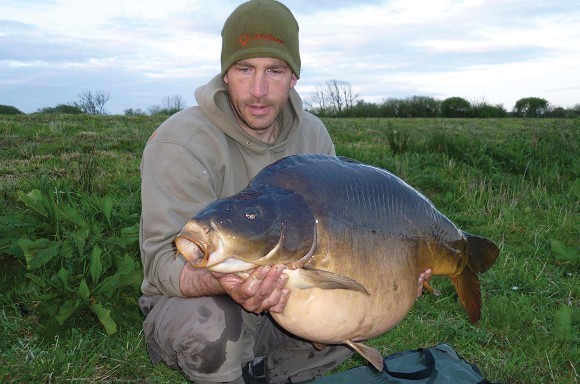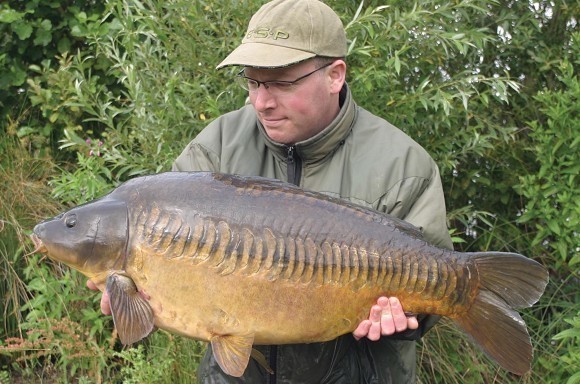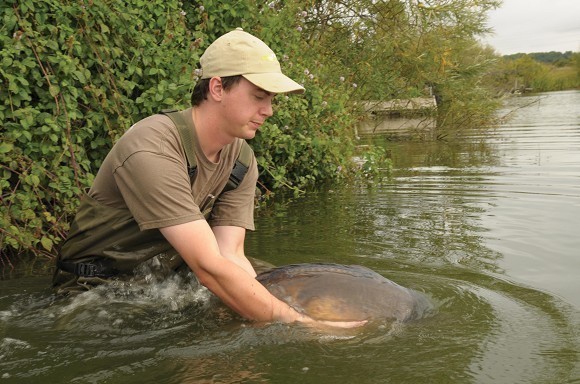
13 pieces of expert advice for winter
If you only do one thing this winter, make sure you do one of these
01 “Confidence is the key,” states Simon Crow. “It breeds enthusiasm, so make sure you’ve plenty of things to occupy the long dark cold nights, like books, etc. There will be lots of blank periods, but when you eventually bank one, you’ll look back at the pictures with great pride.”
02 “Watch the water as much as possible and sling a single, balanced yellow pop-up at ‘em if you see one jump,” reports our diver, Rob Hughes. “Add a small PVA bag of chops if you’re not confident with singles. It works virtually every time!”
03 “Through the bleakest, nastiest portion of the winter, leave the thermometer at home!” reveals Gardner Tackle’s Marketing Manager, Lewis Read. “Nothing saps your confidence more than putting it in the water and seeing that the water temperature is so low that your chances are slim to say the least. At least you will be fishing with a more positive mental attitude if you do away with it...”
04 “Don’t be too reliant on fluoro baits,” comments tackle designing guru, Jon ‘Shoes’ Jones. “During night periods, I’ve had more success on proper boilies. So switch to the fluoros at first light by all means, but get on the boiled food for the hours of darkness. Good luck.”
05 “Choose venues and swims that are actually producing fish,” says Avid Carp’s Mat Woods. “Nothing makes being out in the cold more worthwhile than a trophy shot at the end of it all.”
06 “Use a drop-off lead system,” advises Mark Bartlett. “The fish will be moving slowly, so good hook holds can’t be guaranteed. Losing the lead reduces the chance of hook pulls. Make every bite count!”
07 Says ESP’s Dave Ellyatt: “Throughout the winter, keep a close eye on the long-term weather forecast for those classic mild, wet, low pressure conditions that can trigger otherwise fairly torpid carp into feeding. These conditions often result in bites, even after long periods of inactivity and have been the downfall of many big winter carp.”
08 “Unless you already have ‘guaranteed’ a prolific winter water at hand, there is no better piece of advice I can give you than GET ONE NOW,” remarks carp legend, Julian Cundiff. “Many great summer waters are useless in winter so be prepared to find and travel to waters like Thorpe Lea, Willow etc. Baits and rigs then become important, but first things first you need to pick the right water, so get researching now.”
09 “My winter fishing normally revolves around short day sessions on waters where I’m likely to get a few bites,” declares Dynamite and Shimano consultant, Iain Macmillan. “It’s all I need to get me through the colder months, and yes, I do fish my syndicate venues if the weather looks cock-on, but it’s supposed to be enjoyed this carp fishing lark, not an endurance
test, so my best advice would be to choose your venues appropriately.”
10 Ian Bailey says: “My best piece of advice is to fish a water with a track record of winter form. These are far and few sometimes, but do your research, especially with internet access these days, information is out there to be obtained on top waters with winter form.”
11 “Long dark nights in a bivvy can become a chore, particularly when it is really cold,” asserts bait boffin, Keith Sykes. “Investing in a candle burner such as the UCO Lantern. It will lift your spirits and make the bivvy feel warmer until you get into the bag. A simple tip, but one which will make you feel more comfortable on the bank.”
12 Although winter carp can be reluctant to show during daylight they can often be seen at night,” reveals Chub Academy member, Matt Eaton. “Getting up in the night or staying up late and recasting or moving onto fish has caught me a high percentage of my cold water carp.”
13 “Don’t listen to people who say carp cannot be caught in the winter,” states winter expert, Ian ‘Chilly’ Chillcott. “They can, and they will look and weigh their best. The secret is to stay in touch with the water and keep the bait going in. Not tons of the stuff, but enough to keep them active and looking for food.”





